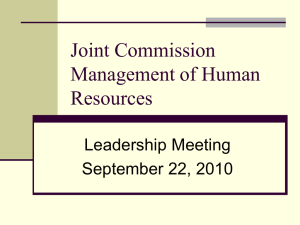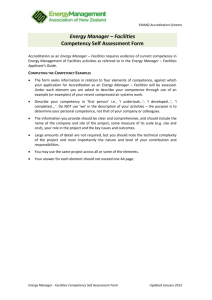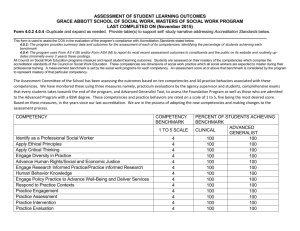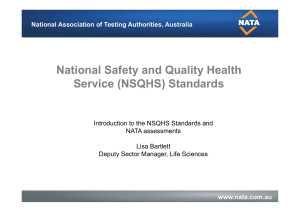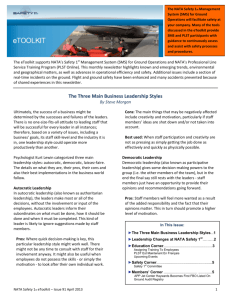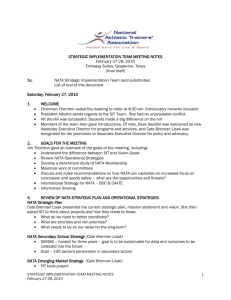Mechanical Testing Field Update - March 2012 Technical
advertisement
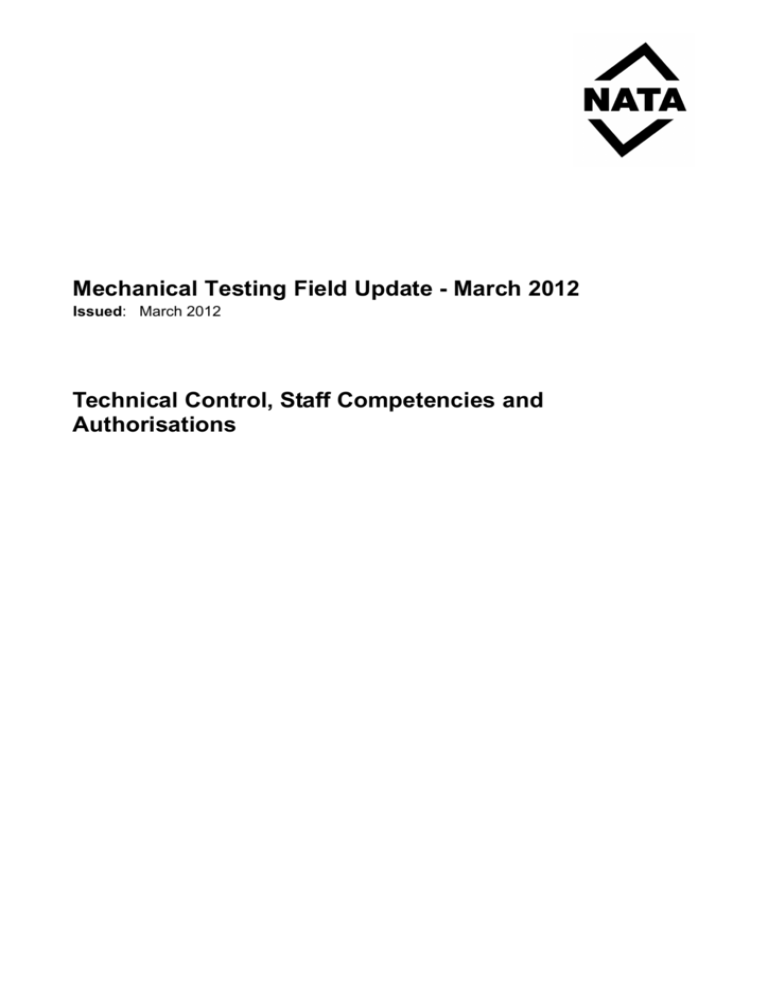
Mechanical Testing Field Update - March 2012 Issued: March 2012 Technical Control, Staff Competencies and Authorisations © Copyright National Association of Testing Authorities, Australia 2012 This publication is protected by copyright under the Commonwealth of Australia Copyright Act 1968. NATA’s accredited facilities or facilities seeking accreditation may use or copy this publication or print or email this publication internally for accreditation purposes. Individuals may store a copy of this publication for private non-commercial use or copy a reasonable portion of this publication in accordance with the fair dealing provisions in Part III Division 3 of the Copyright Act 1968. You must include this copyright notice in its complete form if you make a copy of this publication. Apart from these permitted uses, you must not modify, copy, reproduce, republish, frame, upload to a third party, store in a retrieval system, post, transmit or distribute this content in any way or any form or by any means without express written authority from NATA. Technical Control, Staff Competencies and Authorisations Technical Control, Staff Competencies and Authorisations With the recent elimination of NATA’s requirement for accredited facilities to have a NATA approved signatory, or signatories, assessors will be asked to participate in assessments where facilities have implemented internal procedures for their authorisation of staff to issue test results. So how does this change the way in which assessments are conducted? In no way does this reduce the extent to which NATA assesses a facility’s technical competence, for which assessing the competence with which individual laboratory personnel carry out and report testing activities remains fundamental. Therefore, assessments will still cover the performance of tests by laboratory personnel, still require a combination of performance and discussion of testing, still include critical assessment of the laboratory personnel’s understanding of the results, what an unusual result looks like and what should be considered when something goes wrong. However, as well as evaluating the competence with which individuals carry out and report testing activities, the assessment must also include an evaluation of the technical capability of the personnel with responsibility for authorizing those personnel to both carry out and report the results of testing. Similarly, in a more direct way than before, any deficiencies in individual competency must be considered, not just in the light of that individual’s work, but also in terms of the facility’s processes for establishing the competence of their staff. Where deficiencies are found, working through the implications of this will involve the whole assessment team since there will typically be both system and technical aspects to review in order to determine the source of the failures leading to the unsatisfactory outcome. All assessments are sampling exercises and not every combination of staff member/test/equipment can be covered in the time available but, in respect of personnel approved to release results, effort should be made to review the output of as many such staff as possible covering as many tests for which each person is approved as possible. It will be up to the lead assessor, and ultimately the review processes within NATA, to determine what action will be required in cases where deficiencies with respect to compliance with the NATA requirements are identified. This may range from a condition relating to delivery of further training to a staff member in one aspect of a method, to requiring a review of all testing performed or supervised or authorised by that staff member, to withdrawal of test reports or suspension of the accreditation. While it is never enjoyable to witness poor practice and you should be aware of these eventualities, remember it is the lead assessor’s role to draft the Report on Assessment and recommend the follow-up action warranted. Being as clear as possible as to the nature and consequence of the nonconformances identified will be most appreciated by the Lead Assessor in these situations. While technical assessments may now be a little different, the fundamentals really do remain the same. To provide a focus on the areas where there are some changes, an implementation checklist is included below. March 2012 Page 3 of 5 Technical Control, Staff Competencies and Authorisations FACILTY NAME: ACCREDITATION NO: CONFIRM THE INDIVIDUAL(S) RESPONSIBLE FOR THE FOLLOWING ACTIVITIES OBSERVATIONS SATISFACTORY Y/N Technical control and competency assessment Technical capability of the listed individuals having responsibility for determining the competency of testing staff within the company is to be reviewed. - is there adequate technical capability covering all the areas of testing? - is the responsibility for assigning competence restricted, where applicable, to reflect each individual’s technical capability? Review records that support the competency assessment of a given staff member for a given test, for example, if a quiz or audit checklist is used then review a completed one and confirm that it covers all relevant technical areas. Testing activities Review an activity and discuss with staff involved how a determination of satisfactory performance is made for a given test. - does the person have an adequate understanding of criteria for this determination? During the day, give consideration to the competency of observed testing staff to help evaluate whether those staff who are determining staff competency are adequately performing their role. During the day, ask staff how technical issues that arise during testing are addressed to help evaluate the adequacy of technical supervision. March 2012 Page 4 of 5 Technical Control, Staff Competencies and Authorisations CONFIRM THE INDIVIDUAL(S) RESPONSIBLE FOR THE FOLLOWING ACTIVITIES OBSERVATIONS SATISFACTORY Y/N Technical control and authorisation to issue test reports The technical capability of individuals approved to issue test reports is to be reviewed. - does the process for granting such approval have sufficient technical rigour? - is the responsibility for issuing reports restricted, where applicable, to reflect each individual’s technical capability? Reporting activities A selection of reports, ideally covering output of all personnel approved to issue reports across the full range of their approved tests, is to be reviewed - are the reports adequate? - based on evidence available, is the process for approving staff to issue reports adequate? Providing supervision of assistants, technicians testing under supervision, trainees Ask how supervision of ‘entry level’ staff is being exercised. This includes staff who have a limited testing role, notwithstanding their length of service in the facility, e.g. staff performing routine testing or measurement. Based on the available evidence, is appropriate supervision being exercised over these staff? “Entry level” staff may occasionally perform testing that is not under ‘direct supervision’ e.g. using a portable test bench to perform proof tests on lifting gear in the field. In such cases, signatories should explain how they gain assurance that the testing has been carried out in a competent manner, sufficient to allow them to approve release of the results. Note: Witnessing examples of such testing by the assessor should be considered if this can be arranged. March 2012 Page 5 of 5


